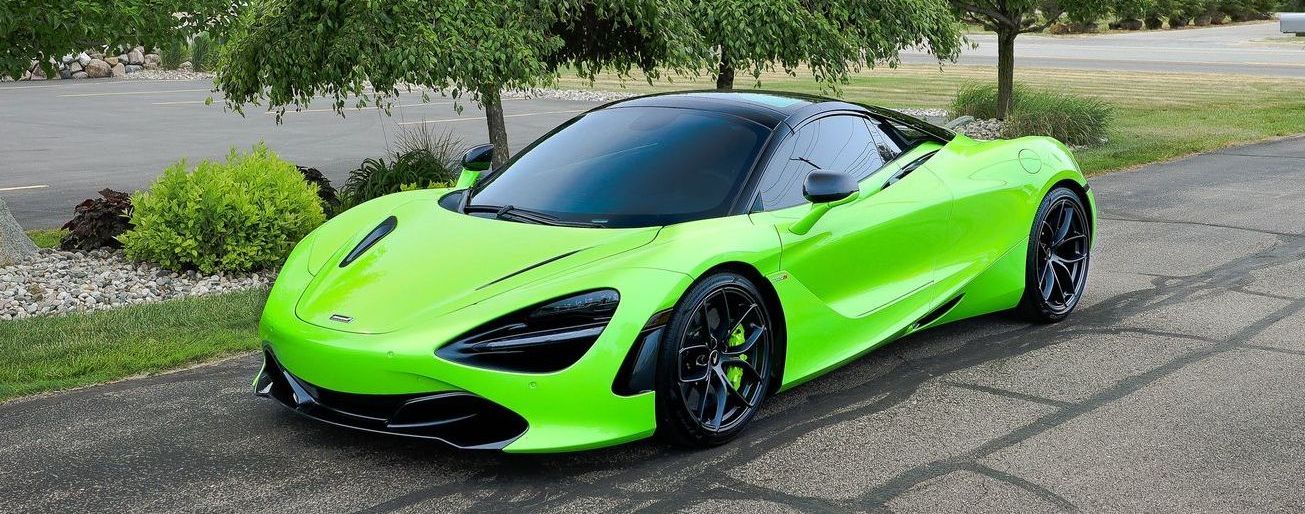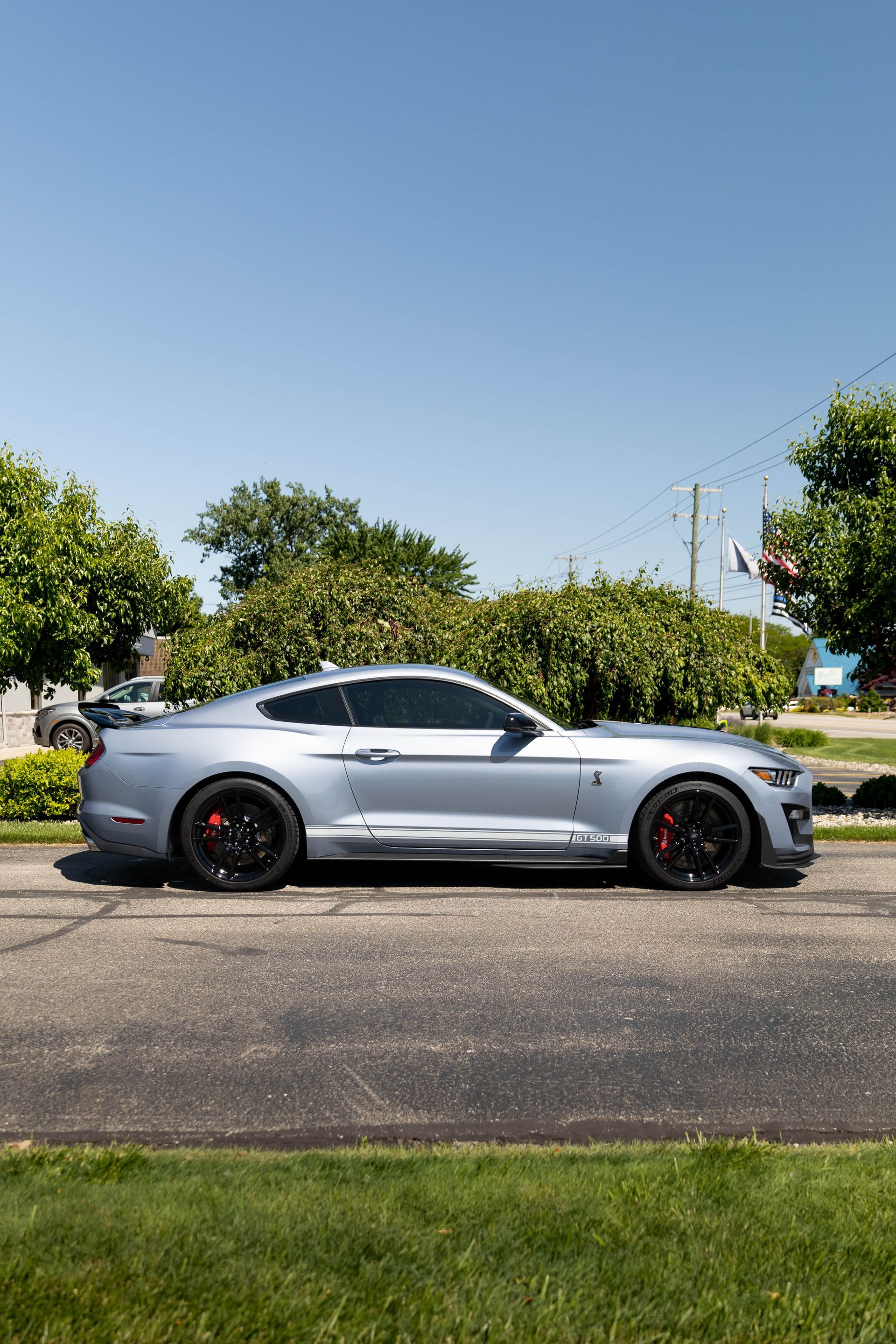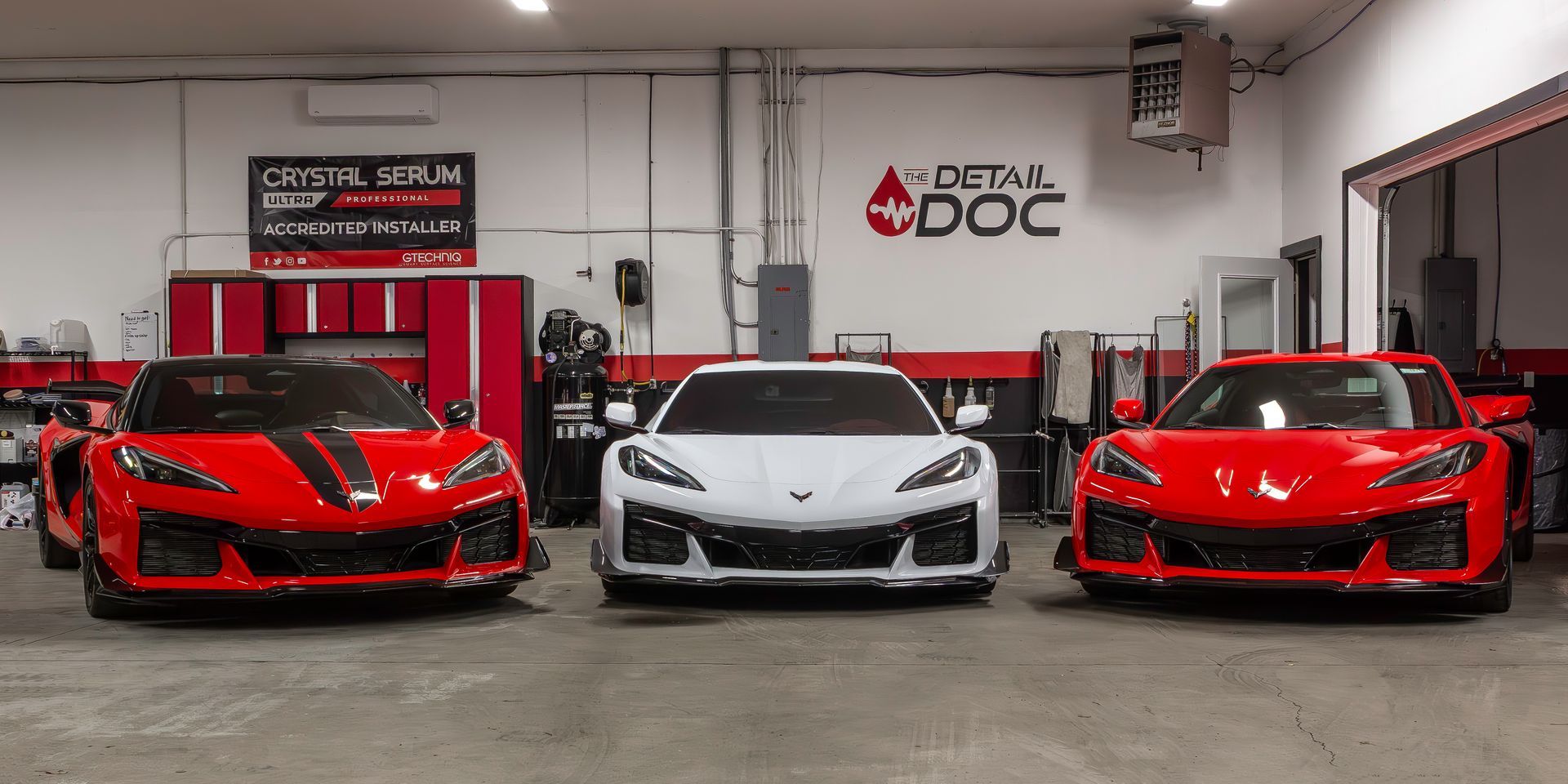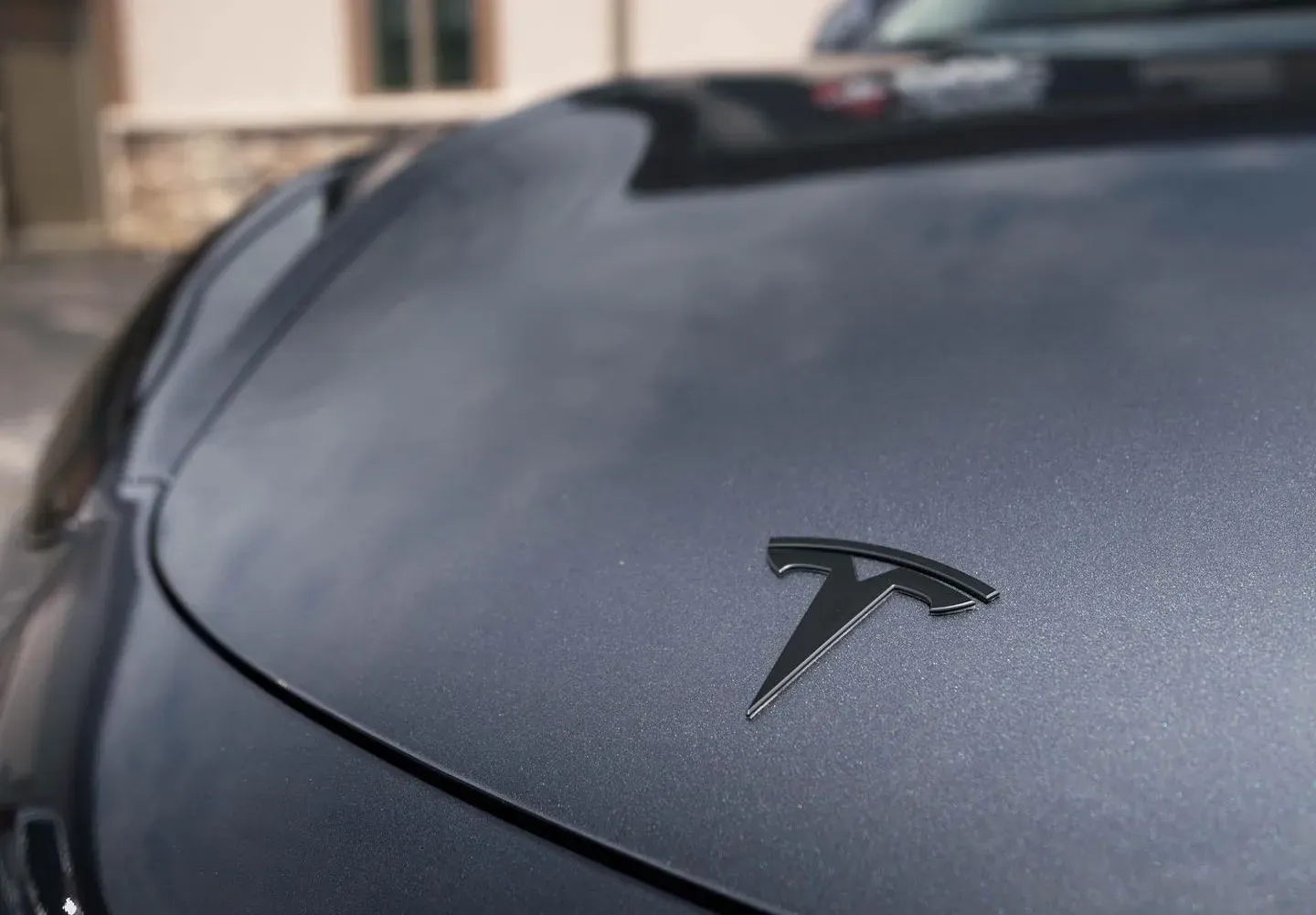The Detail Doc Blog
What Destroys Ceramic Coating? Essential Maintenance Tips to Protect Your Finish
(989) 244-0505 GET SCHEDULED NOWWhen you invest in a
ceramic coating for your vehicle, it’s like adding an extra layer of armor to protect your car's beautiful shine. This innovative solution provides superior protection against contaminants, scratches, and UV rays, keeping your car looking pristine for years. However, despite its durability, a ceramic coating isn't invincible. Many car owners mistakenly believe that once their vehicle is coated, it's entirely safe from damage. Unfortunately, everyday elements like road grime, bird droppings, and even UV rays can wear it down over time. To ensure your investment lasts, it’s crucial to understand what threats your ceramic coating faces. In this comprehensive guide, we’ll explore the primary factors that damage ceramic coatings and provide maintenance tips to help you protect your vehicle’s finish.

What Threatens Your Ceramic Coating?
Ceramic coatings provide an exceptional layer of protection, but they aren’t completely impervious to damage. Various environmental factors, improper maintenance, and the wrong cleaning techniques can degrade the coating over time.
Below, we’ll dive into the common threats that can compromise your ceramic coating and offer tips on how to prevent these issues.
1. Harsh Washing Techniques
One of the most significant contributors to ceramic coating degradation is improper washing. Automated car washes that use abrasive brushes or cloths can cause scratches and swirl marks, stripping away the protective layer of your ceramic coating. Additionally, using inappropriate cleaning tools, like rough sponges or towels, can damage the coating and reduce its protective effectiveness.
What You Should Do:
To protect your ceramic coating, always wash your car by hand using soft microfiber mitts and pH-neutral car shampoo. This ensures the cleaning process is gentle and doesn’t compromise the integrity of the coating. Also, avoid automated car washes, as they can cause long-term damage. When washing, use the two-bucket method to prevent contaminants from being transferred back onto the surface. By dedicating a little extra time to hand washing, you can ensure your coating remains in excellent condition.
2. Road Grime and Salt
During the winter months, road grime, salt, and other contaminants can accumulate on your car’s surface, especially if you live in colder climates or near coastal areas. Salt, in particular, accelerates the corrosion process, causing significant damage to your ceramic coating if left unchecked.
What You Should Do:
In winter or when driving in areas with high salt exposure, wash your car more frequently to remove the buildup. Pay close attention to the undercarriage and wheel wells, where salt can accumulate and cause corrosion. A regular wash schedule will help keep your ceramic coating intact by removing harmful substances before they erode the protective layer.
3. Acid Rain and Bird Droppings
Bird droppings and acid rain are common environmental threats that can damage your ceramic coating. The acidity in bird droppings and the pollutants found in acid rain can eat away at your coating if left on the surface for extended periods. Even a single bird dropping left on your car for a few hours can cause permanent etching or staining on the coating.
What You Should Do:
If you notice bird droppings or acid rain on your car’s surface, remove them immediately using a pH-neutral car wash and a microfiber cloth. Regular cleaning is essential to prevent these contaminants from causing permanent damage. By acting quickly, you can avoid etching or discoloration and keep your vehicle’s coating intact.
4. UV Radiation
UV radiation from the sun is a major threat to your ceramic coating. Prolonged exposure to sunlight can cause the coating to degrade over time, leading to fading, loss of gloss, and a reduction in water-repelling properties. In fact, studies have shown that UV rays can shorten the lifespan of ceramic coatings by up to 30%, particularly when a vehicle is constantly exposed to direct sunlight.
What You Should Do:
To protect your vehicle from UV damage, try to park your car in shaded areas or use a car cover when parking outdoors for extended periods. If you don’t have access to a garage, a car cover is an affordable investment that can shield your vehicle from the harmful effects of the sun. Whenever possible, park in a location that offers protection from direct sunlight to preserve the longevity of your ceramic coating.
5. Harsh Chemicals
The use of harsh cleaning chemicals is another major concern for ceramic coatings. Many household cleaning products, such as dish soap, can contain surfactants and chemicals that break down the oils in the coating, leading to its degradation. Even certain industrial cleaners or off-the-shelf car cleaners can cause damage if they aren’t formulated for use with ceramic-coated surfaces.
What You Should Do:
Stick to pH-neutral cleaners that are specifically designed for use on ceramic-coated vehicles. Products like Meguiar’s Gold Class Car Wash are safe for ceramic coatings and effective at removing dirt without causing damage. Avoid using dish soap, all-purpose cleaners, or industrial-grade chemicals, as these can strip away the protective coating and leave your car vulnerable to further damage.
6. Mechanical Abrasion
Although ceramic coatings are durable and offer a hardness rating of 9H on the Mohs scale, they are still susceptible to scratches or swirls from mechanical abrasion. Minor scratches can occur from improper washing techniques, the use of abrasive materials, or even brushing against rough surfaces. Over time, this mechanical damage can degrade the effectiveness of the coating and reduce its overall protection.
What You Should Do:
Use soft microfiber towels and microfiber mitts when cleaning your vehicle. Avoid using traditional sponges, which can trap dirt and grit, causing scratches. If you’re using any brushes, make sure they are soft and designed specifically for ceramic-coated vehicles. By paying attention to how you clean and maintain your car, you can minimize the risk of mechanical abrasion.

Environmental Factors: How They Impact Ceramic Coatings
Environmental factors are relentless when it comes to wearing down your vehicle’s exterior, and ceramic coatings are no exception. Whether it’s exposure to UV radiation, acid rain, or pollution, these elements can slowly break down the protective layer of your ceramic coating. Let's take a closer look at some of the most damaging environmental threats.
1. UV Radiation and Sun Exposure
As mentioned, UV rays from the sun can degrade ceramic coatings over time. The sun’s rays break down the chemical bonds in the coating, causing it to lose its hydrophobic properties and gloss. This leads to fading, dullness, and an overall decrease in the coating's effectiveness.
What You Should Do:
Whenever possible, park your vehicle in a shaded area or use a high-quality car cover to shield it from the sun. Consider applying a UV-protective film to your windows to further protect the coating from harmful rays. By taking these preventative measures, you can prolong the life of your ceramic coating and keep your vehicle’s paint looking vibrant.
2. Acid Rain
Acid rain, which contains pollutants like sulfuric and nitric acids, is another significant threat to ceramic coatings. When acid rain comes into contact with your car’s surface, it can break down the protective coating and cause it to lose its effectiveness. Over time, this can lead to permanent damage if not removed.
What You Should Do:
After experiencing acid rain, it’s crucial to wash your car as soon as possible to remove any residue. Using a decontamination treatment every few months can help remove any bonded pollutants that regular washing may not address. Regularly inspecting your car for signs of acid rain damage can help prevent long-term degradation.
3. Industrial Fallout
Industrial fallout refers to tiny particles from factories, construction sites, or other industrial activities that can land on your car’s surface. These particles can contain rusting elements that, if left untreated, can penetrate the ceramic coating and cause rust or corrosion.
What You Should Do:
If you live near an industrial area, consider using a clay bar treatment or iron remover to remove any embedded contaminants. This process helps maintain the integrity of the ceramic coating and prevents industrial fallout from causing damage.
How to Maintain Your Ceramic Coating: Essential Tips
Now that we’ve covered the threats to your ceramic coating, it’s time to discuss how to maintain and care for it to ensure longevity.
1. Routine Washing with pH-Neutral Shampoo
Washing your car regularly is one of the most important aspects of maintaining your ceramic coating. Use a pH-neutral shampoo designed for ceramic-coated vehicles. This ensures you’re not stripping away the protective layer while cleaning.
Tip: Use the two-bucket method to minimize the transfer of contaminants. This method helps ensure your microfiber mitt is always clean, reducing the risk of scratching your coating.
2. Avoid Automatic Car Washes
While automatic car washes may be convenient, they often use abrasive brushes that can damage your ceramic coating. Instead, hand wash your car or visit a professional detailer who uses touchless systems or hand washing techniques.
3. Dry Your Car Properly
After washing, always dry your car with a clean microfiber towel. Avoid air drying, as this can lead to water spots that affect the finish of your ceramic coating.
4. Touch-Up with Ceramic Spray
Regularly apply a ceramic spray to maintain the hydrophobic properties of your coating. This will enhance the coating’s water-repelling abilities and keep your car’s finish looking shiny and clean.
5. Park in Shade or Use a Car Cover
Whenever possible, park in shaded areas or use a car cover to protect your vehicle from UV radiation and other environmental factors. This is especially important if you don’t have access to a garage.
6. Decontamination Treatment
Every few months, perform a decontamination treatment using products designed to remove embedded contaminants like iron particles and industrial fallout. This will help preserve the effectiveness of your ceramic coating.
Ready to Protect Your Vehicle's Ceramic Coating?
Maintaining your ceramic coating is essential to keeping your vehicle looking its best for years to come. By following the tips outlined in this guide and taking proactive steps to protect your car from common threats, you can ensure that your coating remains effective and your vehicle’s finish stays flawless.
If you need expert help maintaining your ceramic coating or have any questions, The Detail Doc is here to assist. Contact us today at (989) 244-0505 or click The Detail Doc contact page to schedule a consultation.
The Detail Doc Blog




